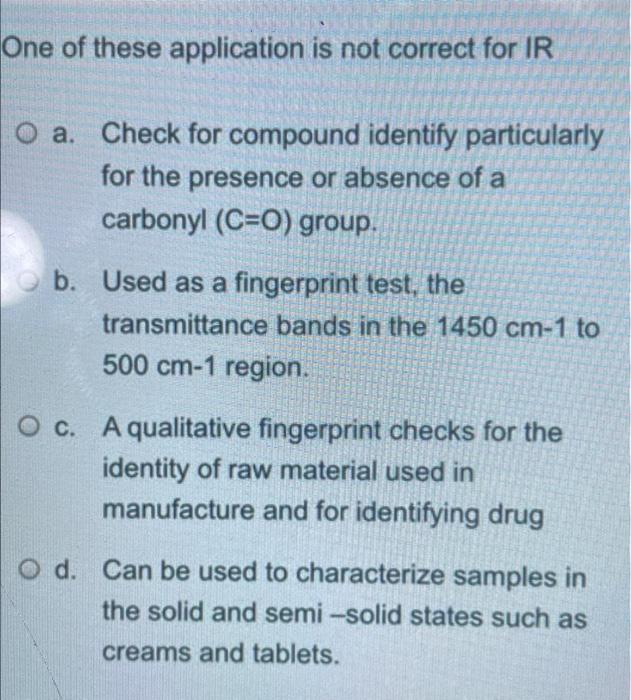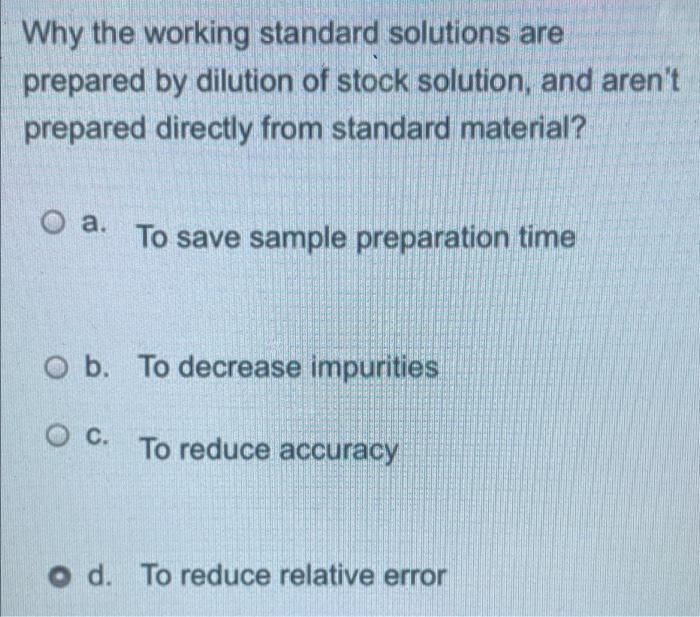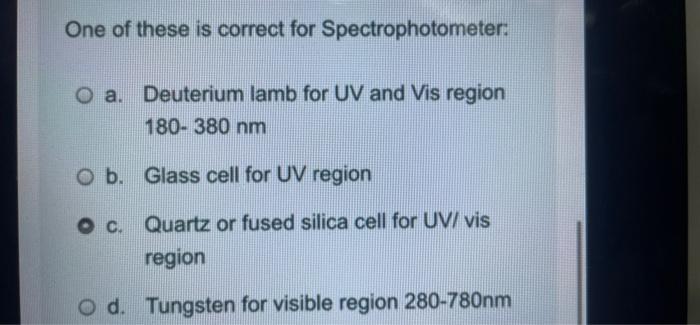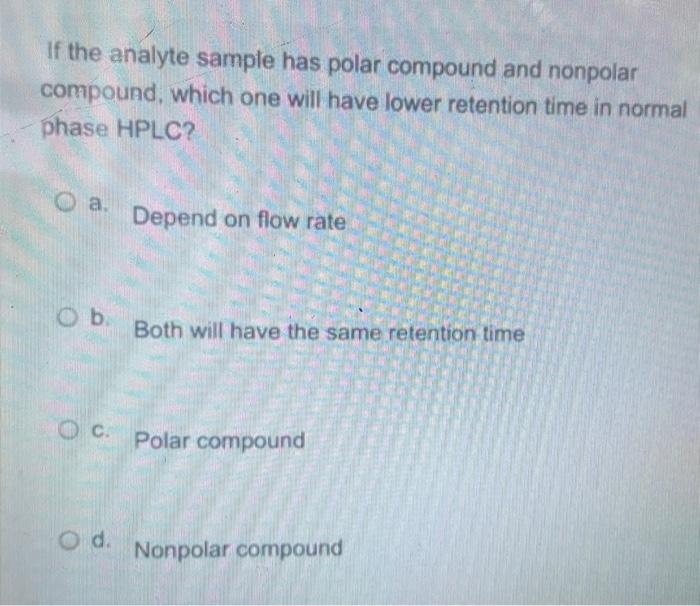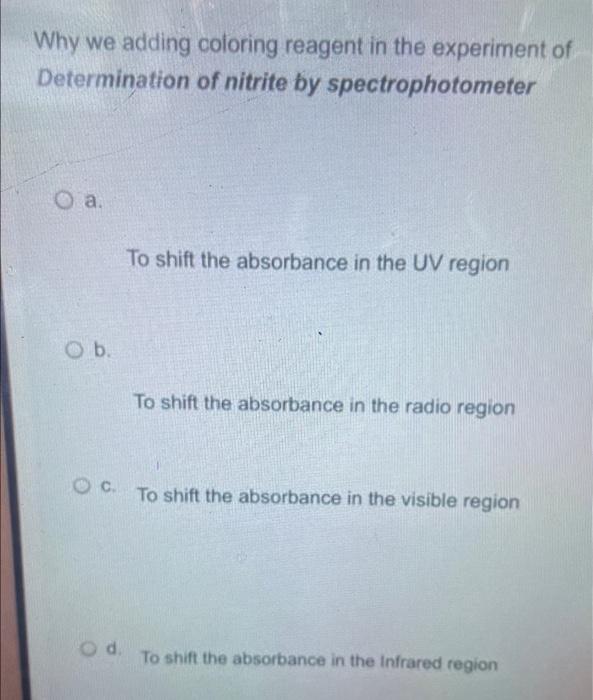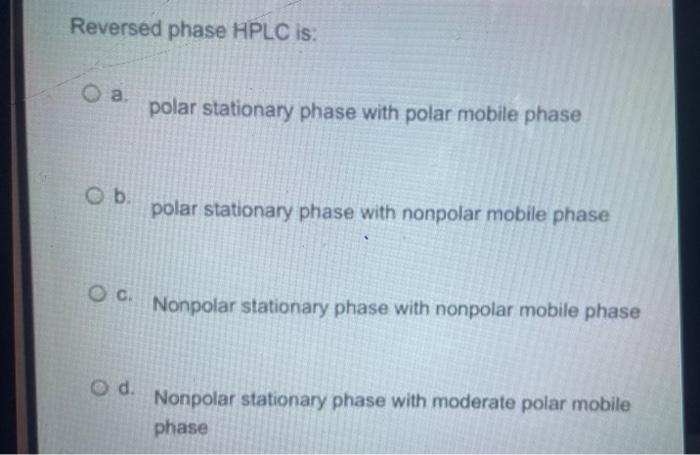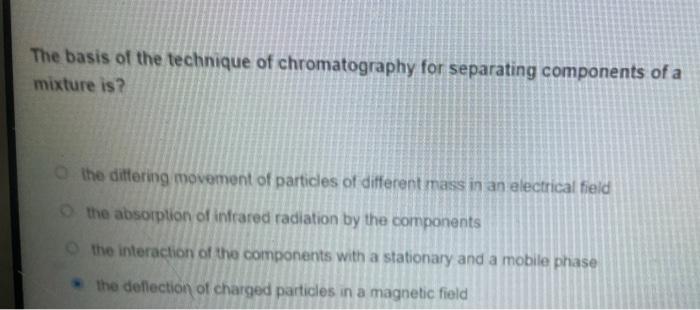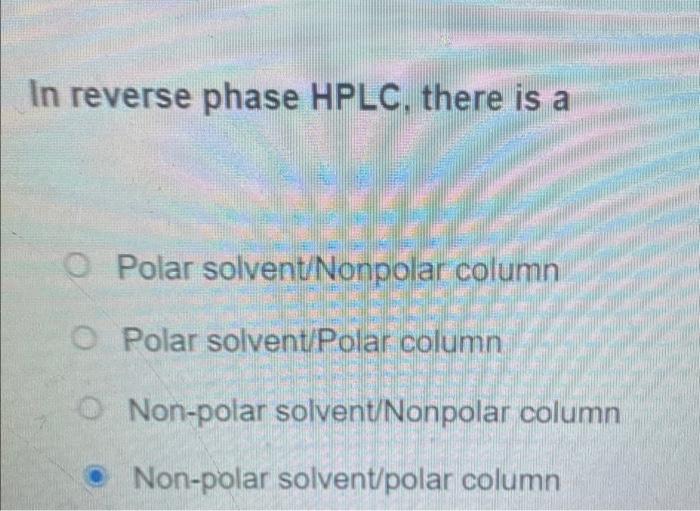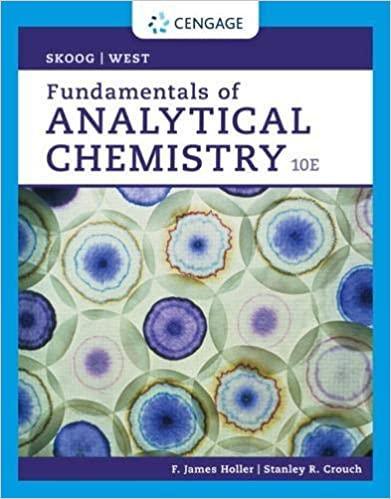One of these application is not correct for IR O a. Check for compound identify particularly for the presence or absence of a carbonyl (C=0) group. b. Used as a fingerprint test, the transmittance bands in the 1450 cm-1 to 500 cm-1 region. O c. A qualitative fingerprint checks for the identity of raw material used in manufacture and for identifying drug O d. Can be used to characterize samples in the solid and semi-solid states such as creams and tablets. One of these is not correct for TLC O a Mobile phase moves through stationary phase by capillary action O b. The size of the silica gel particles in the range 2-25 mm. c. Detection by Ultraviolet light lamp using silica gel GF 254 nim Od The system is a glass or plastic plate coated with silica gel From following chart calculate Molar absorptivity Note that the linear regression line is a good fit to the points, and that the intercept is near zero. The slope of the line (0.0147 ppm-1) equals eb. With b = 1 cm-1 Sample Beer's Law Plot 09 08 0.7 y -0.0147x+0.0091 R -0.9989 0.6 05 Absorbande 0 03 02 01 20 10 60 concentration (ppm) O a. E = 0.0847 ppm-1 cm-1 O b. E = 0.0947 ppm-1 cm-1 Oc. E = 0.0147 ppm-1 cm-1 od E=0.0847 ppm-1 cm-1 Medium stretching IR band at 2220cm-1 indicate: a. O-H of alcohol O b. Carbonyl of ketone C. C=C of Alkene O d. CN nitrile One of these is correct for HPLC a. The chromatogram: is a graph that monitors the signal in the detector over time o b. Retention time: The time at which a specific analyte elutes (comes out of the end of the injector) Oc. Hydrogen bond is the interaction with reverse phase d. Vander wales is the interaction with straight phase Why the working standard solutions are prepared by dilution of stock solution, and aren't prepared directly from standard material? O a. To save sample preparation time a o b. To decrease impurities O C. To reduce accuracy o d. To reduce relative error One of these is correct for Spectrophotometer: O a. Deuterium lamb for UV and Vis region 180- 380 nm O b. Glass cell for UV region O c. Quartz or fused silica cell for UV/ vis region O d. Tungsten for visible region 280-780nm If the analyte sample has polar compound and nonpolar compound, which one will have lower retention time in normal phase HPLC? O a. Depend on flow rate O b. Both will have the same retention time Oc: Polar compound Od d. Nonpolar compound Why we adding coloring reagent in the experiment of Determination of nitrite by spectrophotometer a. To shift the absorbance in the UV region Ob. To shift the absorbance in the radio region To shift the absorbance in the visible region Od To shift the absorbance in the Infrared region Reversed phase HPLC is: O a polar stationary phase with polar mobile phase O b. polar stationary phase with nonpolar mobile phase OC. Nonpolar stationary phase with nonpolar mobile phase O d. Nonpolar stationary phase with moderate polar mobile phase The basis of the technique of chromatography for separating components of a mixture is? the differing movement of particles of different mass in an electrical field the absorption of infrared radiation by the components the interaction of the components with a stationary and a mobile phase the deflection of charged particles in a magnetic field In reverse phase HPLC, there is a Polar solvent/Nonpolar column Polar solvent/Polar column Non-polar solvent/Nonpolar column Non-polar solvent/polar column
